Haliotis sp. The New Zealand Blackfoot-Abalone The Chatam Islands near New Zealand "The abalone pearl is one of the most beautiful and unusual of pearls. It is one of the rarest... The colors of the abalone pearl are rich and exotic... The rarest and most highly prized offer rich peacock blue and green hues." The Book of the Pearl, by Frederick Kunz Abalone is a primitive univalve (one shell) mollusk at least thirty million years old. There are eight varieties found in various areas around the Pacific Rim. The present pearl was found by its owner while diving for abalone for dinner off the coast of a remote island located about 800 kilometers east of New Zealand. The blackfoot abalone, so called because of the dark black color of its foot, can grow up to 18cm in length and 13 cm wide. While it is often found close to the surface it may grow to depths of 30 meters, where seaweed grows in larger amounts—helping to nurture its colorful mother-of-pearl. The undulating grain in the shell is the result of seasonal fluctuations in the Abalone’s diet. The dark organic material of the conchiolin layers is laid down during the winter months and the nacre, made up of aragonite and calcite crystals, is laid down in the warmer summer months. In the mid-14th century, when the Maoris first arrived in today’s New Zealand with their canoes, no mammals lived on the island. Found in great numbers all along the coastline, the Paúa—with its appetizing and very ample flesh—became a staple fare for the Maori. Today it is still served as a sought-after delicacy, and there is increased demand for it in the Far East. Indeed it is the only mollusk which has a commercial usage in its entirety; the shell is used for inlay and buttons, the meat for food, and the guts for fishing bait. Abalone pearls are rare. A fine large pearl over 15mm, such as the present one, is found in probably only 1 per 900,000 animals. Reasons for rarity are that large pearls require approximately eight to ten years to form. Since the animals are fished commercially for meat when they are four or five years old, sufficient time has not passed to allow pearl formation. Furthermore, a specific combination of factors must exist for natural pearl formation, including invasion of a foreign object, correct water temperature, and availability of correct diet. Natural Abalone pearls can vary in shape, color, and may be solid or hollow. Their shapes can vary from round or ovalish to flat baroques to giant horn shapes, such as the present one. This horn-shape is due to the anatomy of the snail. Natural abalone pearls are formed in thick nacreous layers joined together by organic conchiolin—a form similar to that of other oriental pearl formation, but with thicker nacreous layers. This exotic gem of the sea, displays other-worldly iridescent green, blue, violet, orange and yellow hues. Its thick nacre is almost entirely complete, with coverage on the front, back and to the interior of the top of the pearl, and merely a small (approximately 2.0 x 3.0 mm) area deficient to the tip of reverse side. (Shell not included in this lot). Weighing 22.5 carats and measuring 44 x 17.5 x 6.8mm.
Haliotis sp. The New Zealand Blackfoot-Abalone The Chatam Islands near New Zealand "The abalone pearl is one of the most beautiful and unusual of pearls. It is one of the rarest... The colors of the abalone pearl are rich and exotic... The rarest and most highly prized offer rich peacock blue and green hues." The Book of the Pearl, by Frederick Kunz Abalone is a primitive univalve (one shell) mollusk at least thirty million years old. There are eight varieties found in various areas around the Pacific Rim. The present pearl was found by its owner while diving for abalone for dinner off the coast of a remote island located about 800 kilometers east of New Zealand. The blackfoot abalone, so called because of the dark black color of its foot, can grow up to 18cm in length and 13 cm wide. While it is often found close to the surface it may grow to depths of 30 meters, where seaweed grows in larger amounts—helping to nurture its colorful mother-of-pearl. The undulating grain in the shell is the result of seasonal fluctuations in the Abalone’s diet. The dark organic material of the conchiolin layers is laid down during the winter months and the nacre, made up of aragonite and calcite crystals, is laid down in the warmer summer months. In the mid-14th century, when the Maoris first arrived in today’s New Zealand with their canoes, no mammals lived on the island. Found in great numbers all along the coastline, the Paúa—with its appetizing and very ample flesh—became a staple fare for the Maori. Today it is still served as a sought-after delicacy, and there is increased demand for it in the Far East. Indeed it is the only mollusk which has a commercial usage in its entirety; the shell is used for inlay and buttons, the meat for food, and the guts for fishing bait. Abalone pearls are rare. A fine large pearl over 15mm, such as the present one, is found in probably only 1 per 900,000 animals. Reasons for rarity are that large pearls require approximately eight to ten years to form. Since the animals are fished commercially for meat when they are four or five years old, sufficient time has not passed to allow pearl formation. Furthermore, a specific combination of factors must exist for natural pearl formation, including invasion of a foreign object, correct water temperature, and availability of correct diet. Natural Abalone pearls can vary in shape, color, and may be solid or hollow. Their shapes can vary from round or ovalish to flat baroques to giant horn shapes, such as the present one. This horn-shape is due to the anatomy of the snail. Natural abalone pearls are formed in thick nacreous layers joined together by organic conchiolin—a form similar to that of other oriental pearl formation, but with thicker nacreous layers. This exotic gem of the sea, displays other-worldly iridescent green, blue, violet, orange and yellow hues. Its thick nacre is almost entirely complete, with coverage on the front, back and to the interior of the top of the pearl, and merely a small (approximately 2.0 x 3.0 mm) area deficient to the tip of reverse side. (Shell not included in this lot). Weighing 22.5 carats and measuring 44 x 17.5 x 6.8mm.
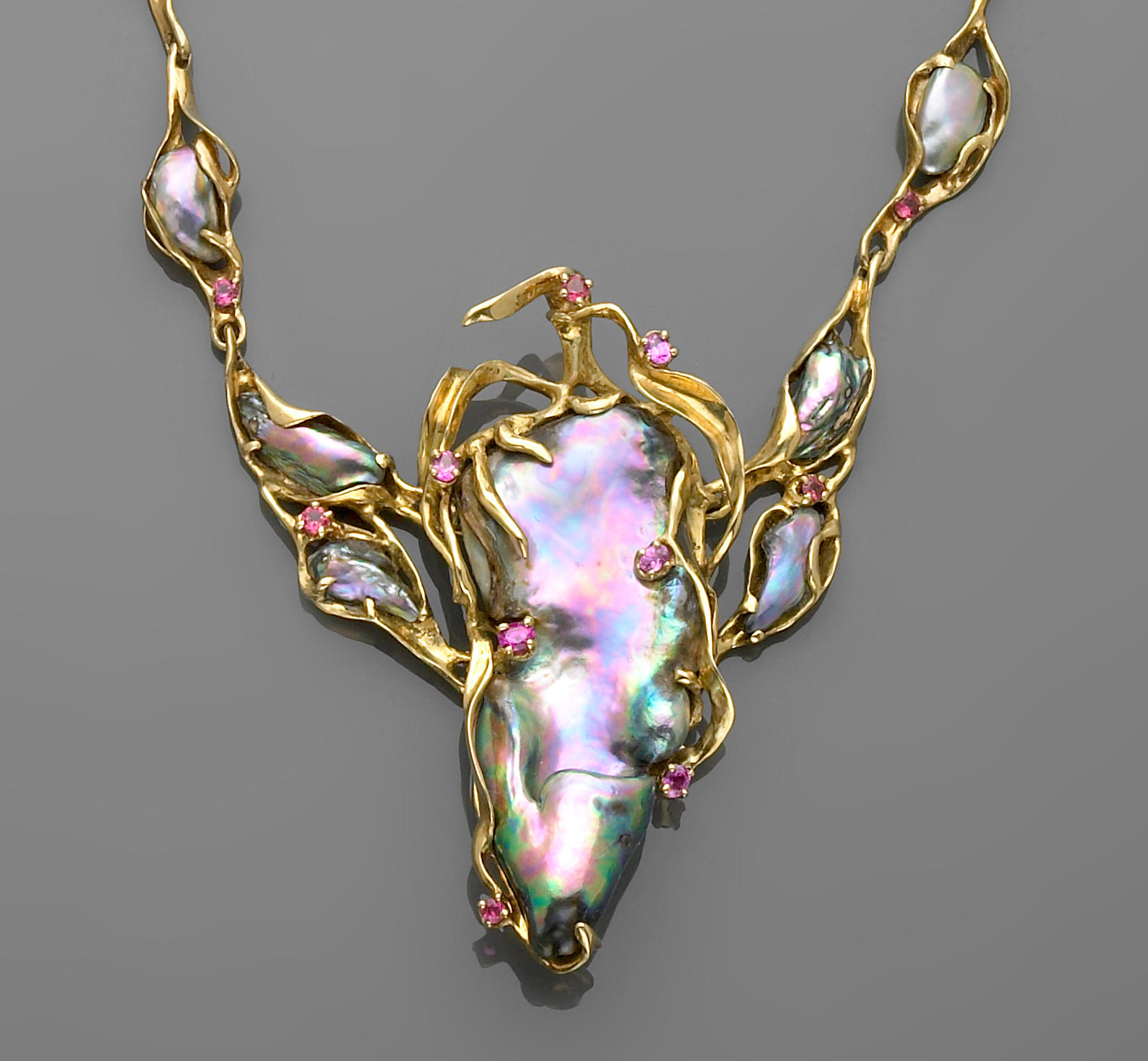
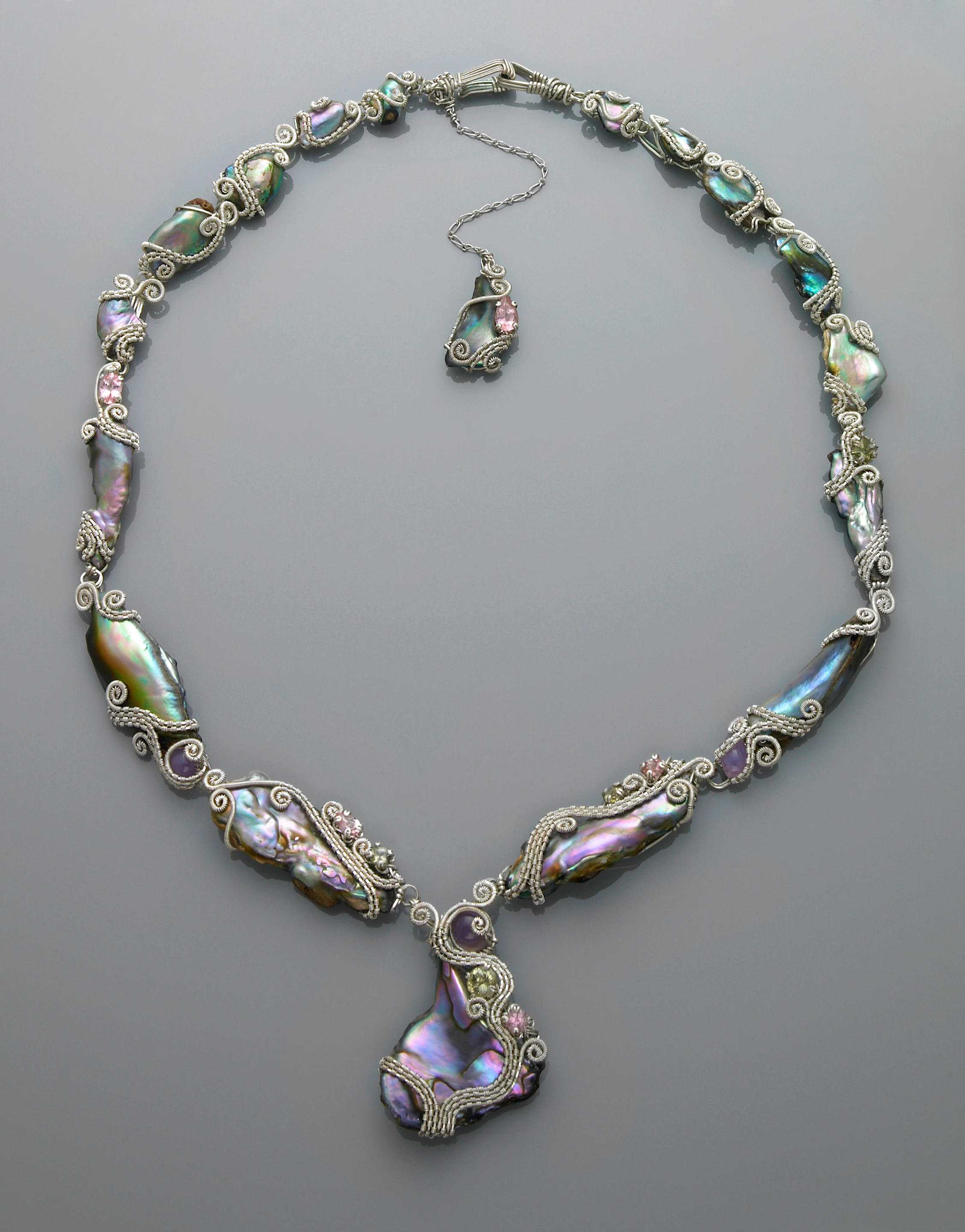
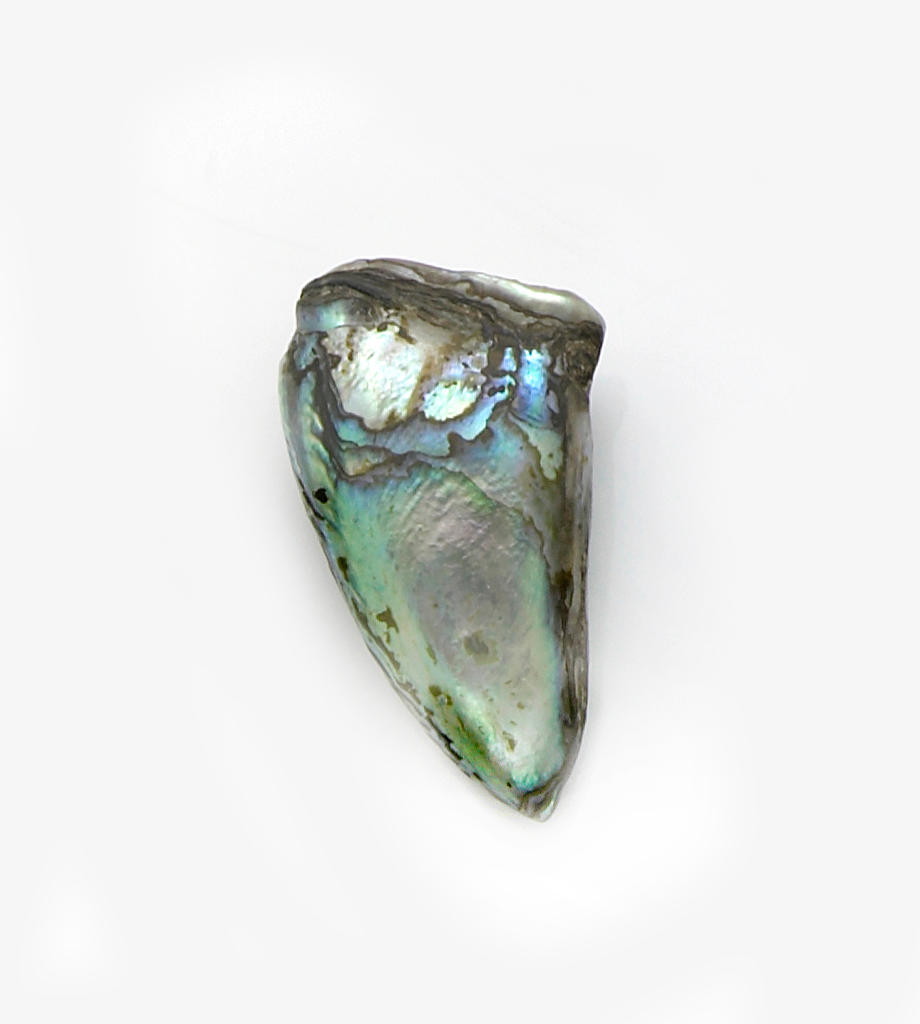
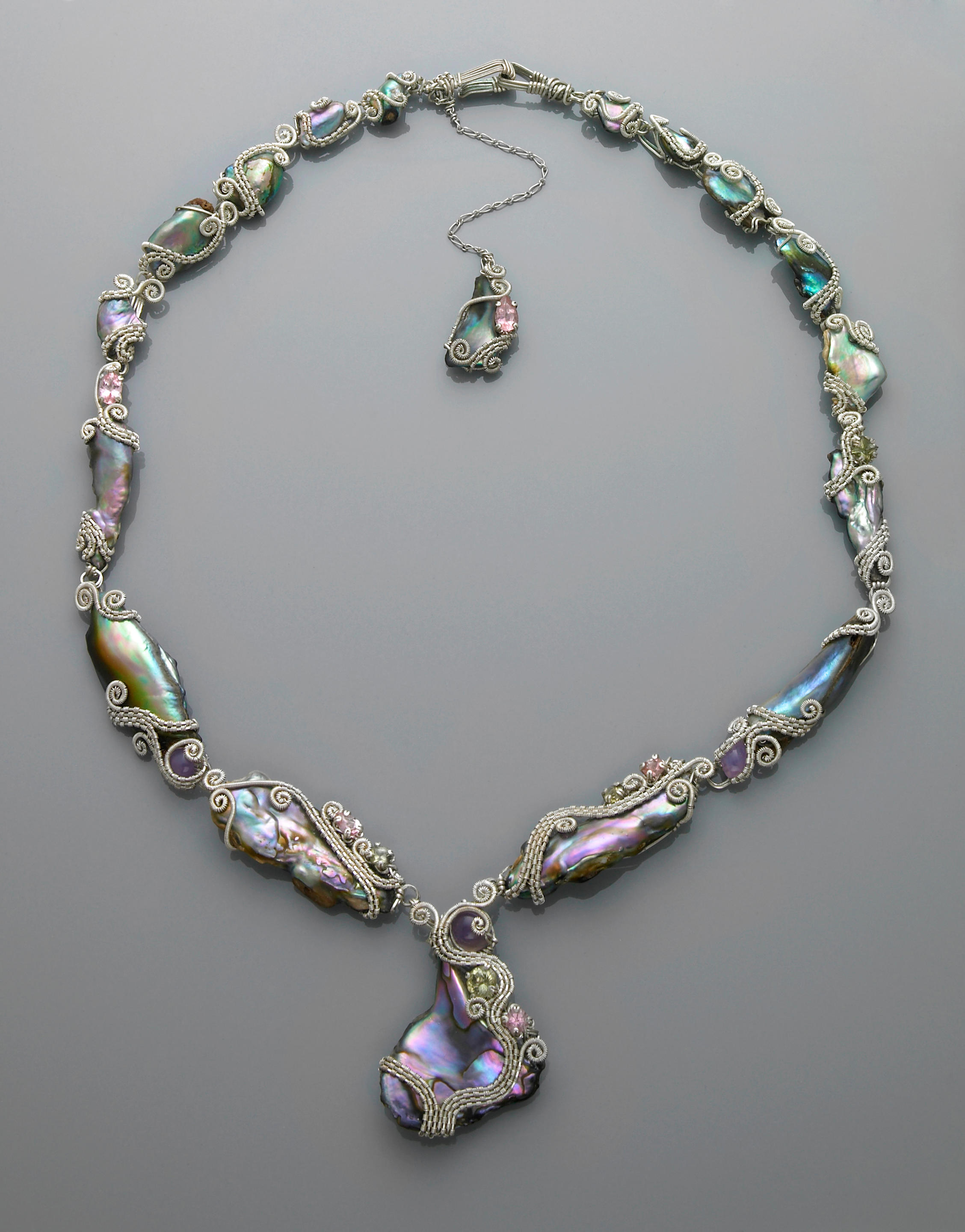



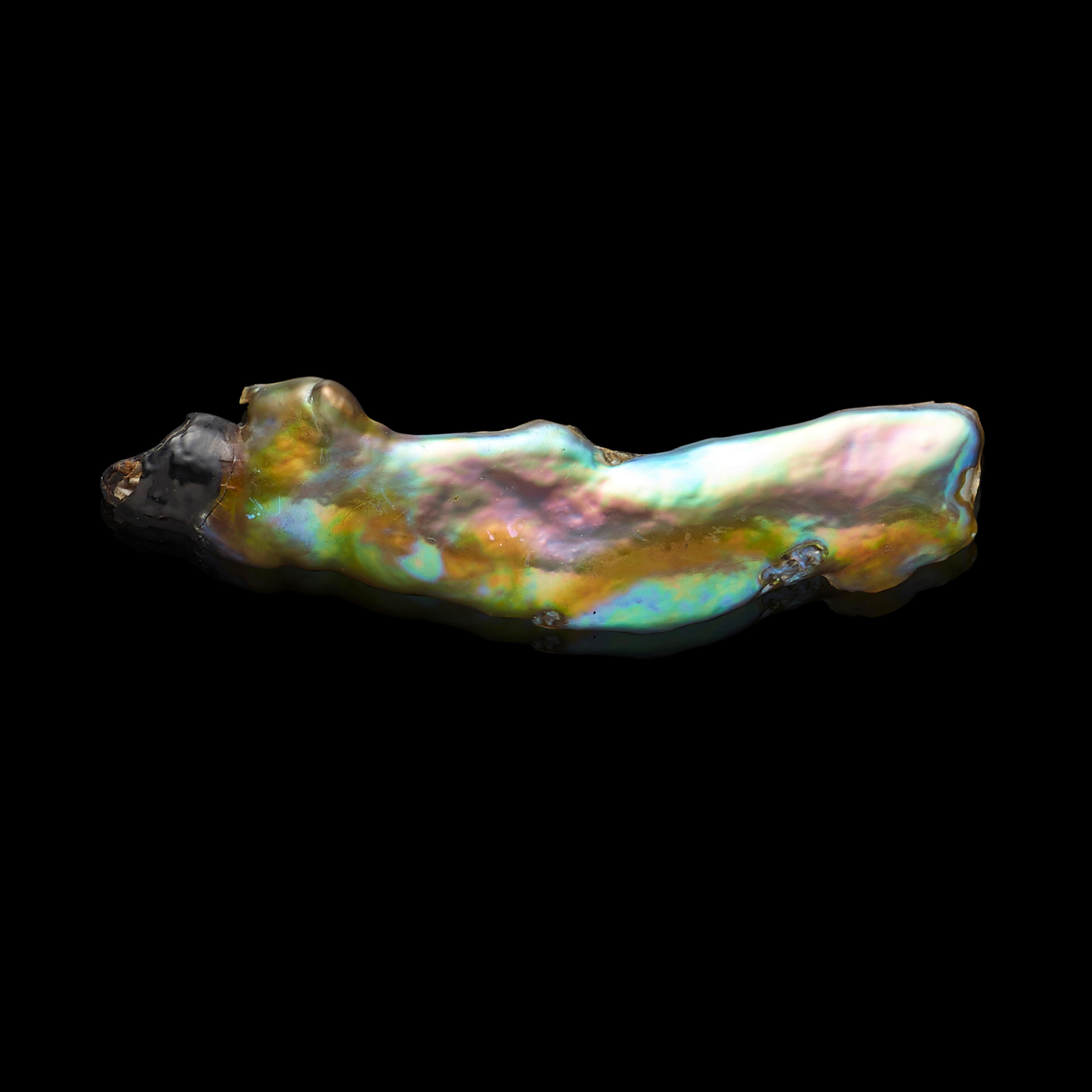
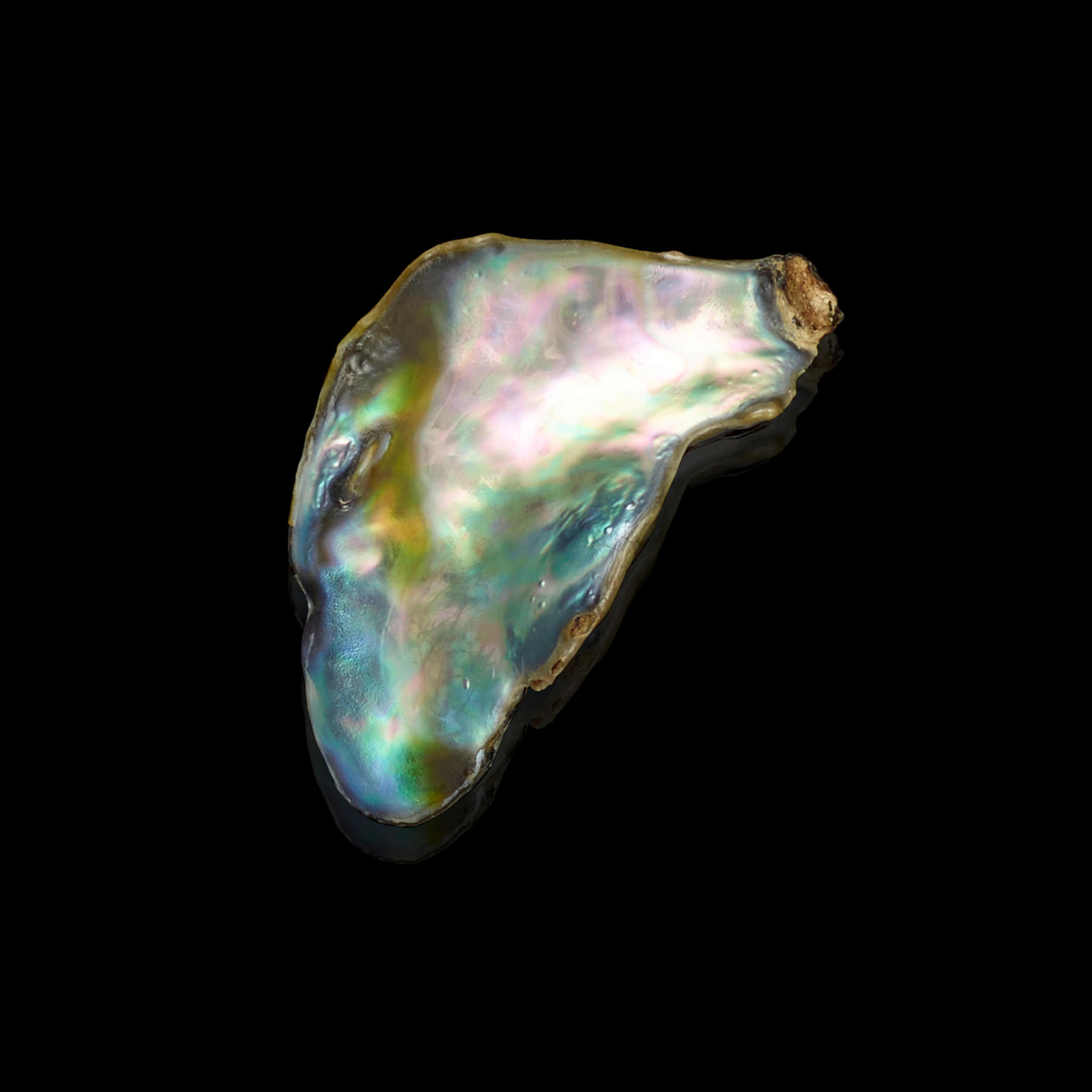

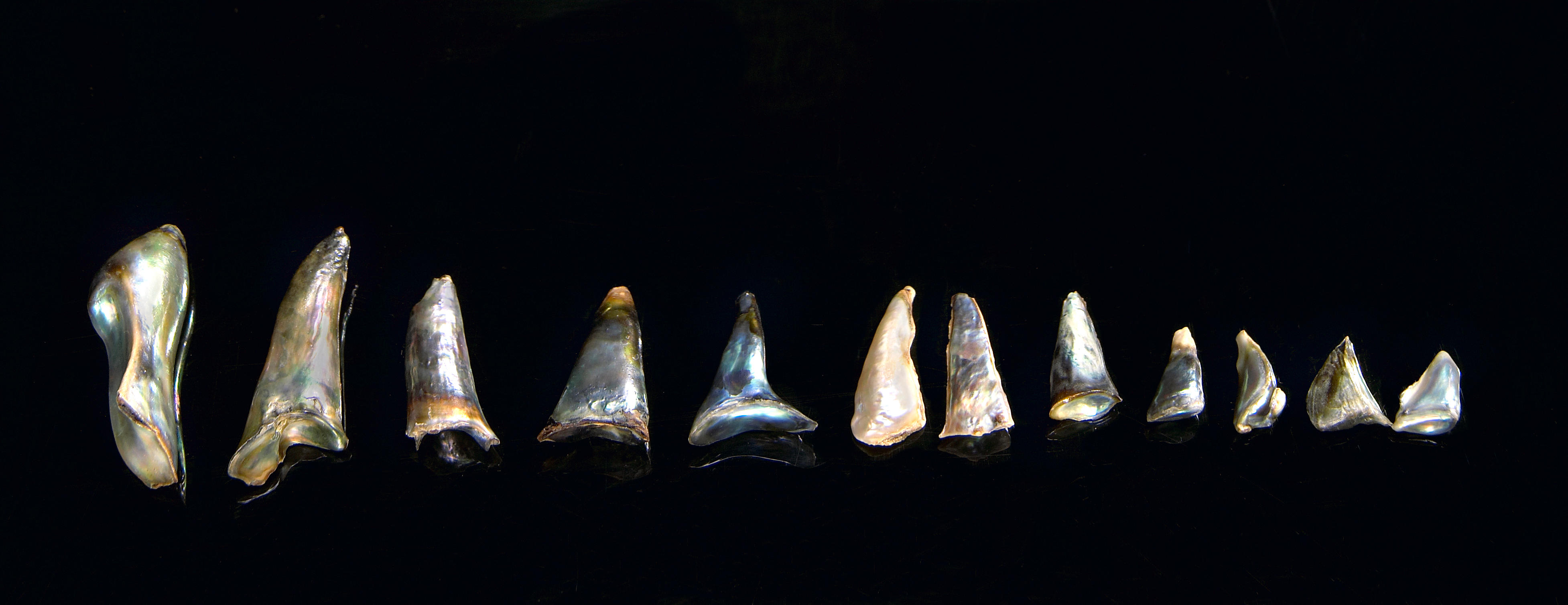


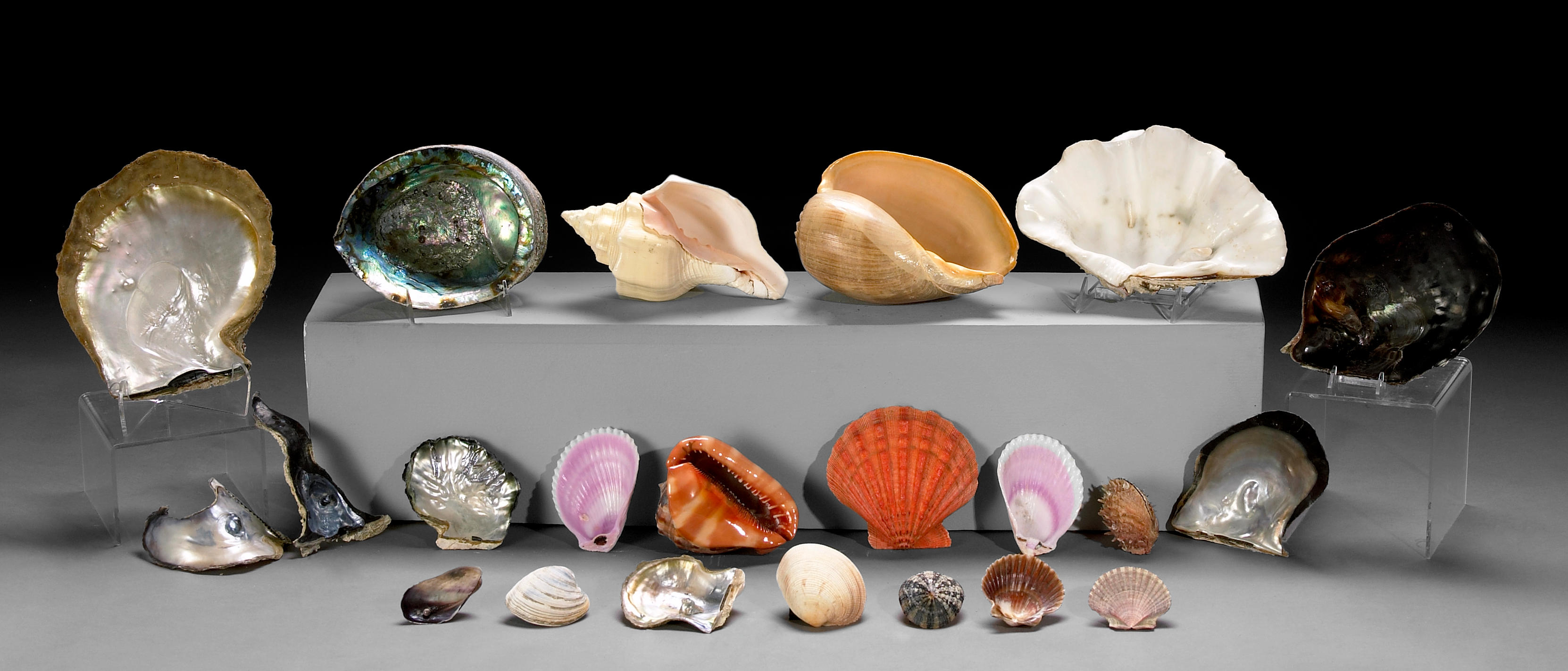

Testen Sie LotSearch und seine Premium-Features 7 Tage - ohne Kosten!
Lassen Sie sich automatisch über neue Objekte in kommenden Auktionen benachrichtigen.
Suchauftrag anlegen